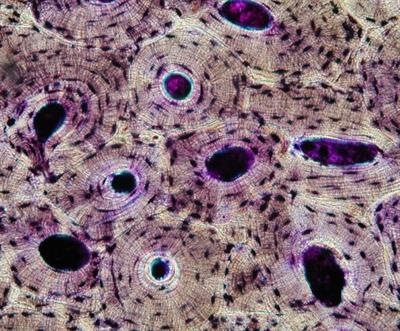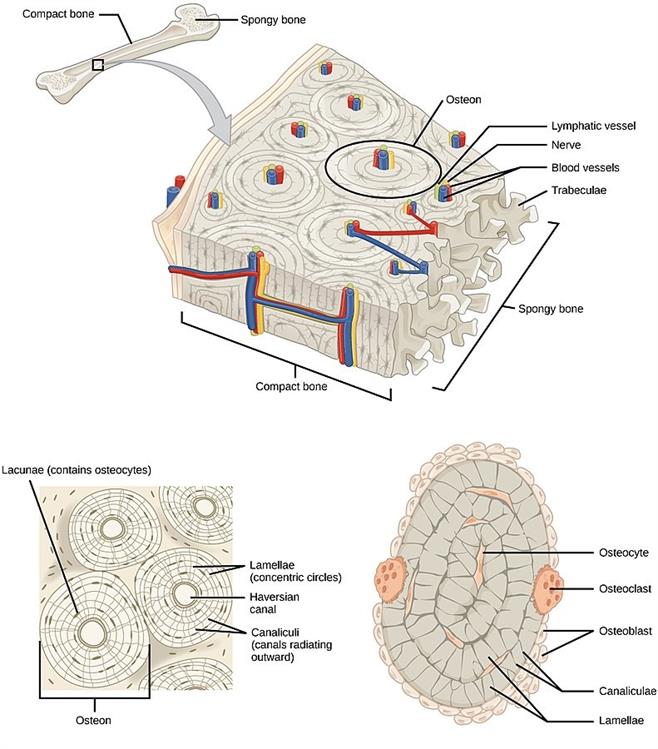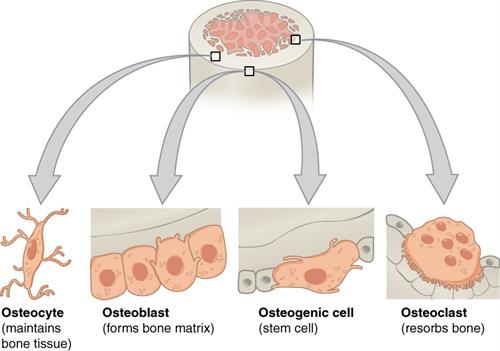
PUMPA - SMART LEARNING
எங்கள் ஆசிரியர்களுடன் 1-ஆன்-1 ஆலோசனை நேரத்தைப் பெறுங்கள். டாப்பர் ஆவதற்கு நாங்கள் பயிற்சி அளிப்போம்
Book Free DemoBone:
If a person has a fracture in his leg, how could he facilitate himself for the movement? He may use crutches for the movement. Crutches gives mechanical support for him to walk.
Important!
What gives you the mechanical support for the movement, just like crutches, when you do not need them?
The answer is bones.
Bones provide mechanical support for our body as an endoskeleton. It gives shape and a structural framework to the body.

Compact bone - ground cross section
Bone is a solid, rigid, and non-flexible, hard connective tissue that forms vertebrate's skeleton.
- It is porous, highly vascular (comprises blood vessels and cells), mineralized, stiff and rigid.
- The cells are embedded inside the hard matrix, which is made up of proteins, collagen fibres, and rich in salts of calcium, phosphorous, which are the main reasons for the bone's hardness and strength.
Structure of a bone:
The matrix containing
- \(62\)% of inorganic materials such as phosphates, fluorides and carbonates of calcium and magnesium.
- \(38\)% organic phase called ossein, which contains collagen fibres made up of sulphated mucopolysaccharides.
The bone matrix is in the form of bright and dark concentric rings called lamellae.
They mostly arranged in concentric rings around narrow longitudinal cavities called haversian canals. These are called haversian lamellae.
The fluid-filled spaces present between the lamellae is called bone lacunae, forms a network of fine radiating channels called canaliculi. Bone cells in lacunae are called osteocytes. Each bone cell communicate with one another through this network.
This entire lamellae system, canaliculi and lacunae, and haversian canals form a cylindrical unit called the haversian system or osteon. The Haversian canals are interconnected by transverse channels called volkmann's canal. Each Haversian canal contains an artery, a vein, a nerve and some bone cells. All packed with connective tissues.

Internal structure of bone
The long bones in the body contain two parts,
- Head or epiphysis
- Shaft or diaphysis.
The hollow cavities of spaces in the shaft are called marrow cavities. These cavities are filled with a semi-solid, fatty, neurovascular tissue called bone marrow. These tissues are special kind of tissues called myelogenous or myeloid tissue. Bone marrow is yellow. In long bones, it appears red towards the regions of epiphysis. Due to the presence of many blood vessels, bone marrow is red in those regions. Outside the marrow cavity, a lining called the endosteum consists of one or more layers of osteoblast.
Function: The red bone marrow is involved in blood production, while the yellow bone marrow only produces blood in emergencies, such as when there is a lot of blood loss.
Types of bones:
Based on its texture, a bone is of two types:
- Compact or periosteal
- Spongy or cancellous
Compact bone: It has lamella in Haversian systems without any gaps in between them. In a long compact bone, the shaft is in the form of a hollow cylinder. The hollow space contains yellow bone marrow, which produces blood corpuscles in emergency conditions.
Spongy bone: It has lamellae called trabeculae, with small spaces between them. These spaces contain red bone marrow. It produces erythrocytes and granular leucocytes. Vertebrae, ribs, skull and epiphysis of long bones are made up of spongy bones enclosed by a compact bone layer. Spongy bones has less weight and a good amount of strength.
Function:
Function:
- Bones provides shape and structural framework to the body.
- Bones protect the vital organs such as the brain, lungs from injury.
- It also anchors the muscles and serves as a storage site of calcium and phosphate.
- Bones enable body movements by acting as a push button and points of attachment for muscles.
- The formation of blood cells (hematopoiesis) occurs in the red marrow found within certain bones' cavities.
- Bones serve as an energy reservoir by storing lipids in the form of fats in adipose tissues.
Types of bone cells:
- The process of bone formation is termed as osteogenesis.
- Osteoblast cells are responsible for the new bone formation.

Bone cells
Reference:
https://upload.wikimedia.org/wikipedia/commons/0/0c/Compact_bone_-_ground_cross_section.jpg
https://commons.wikimedia.org/wiki/File:604_Bone_cells.jpg
https://upload.wikimedia.org/wikipedia/commons/4/49/Figure_33_02_09.jpg